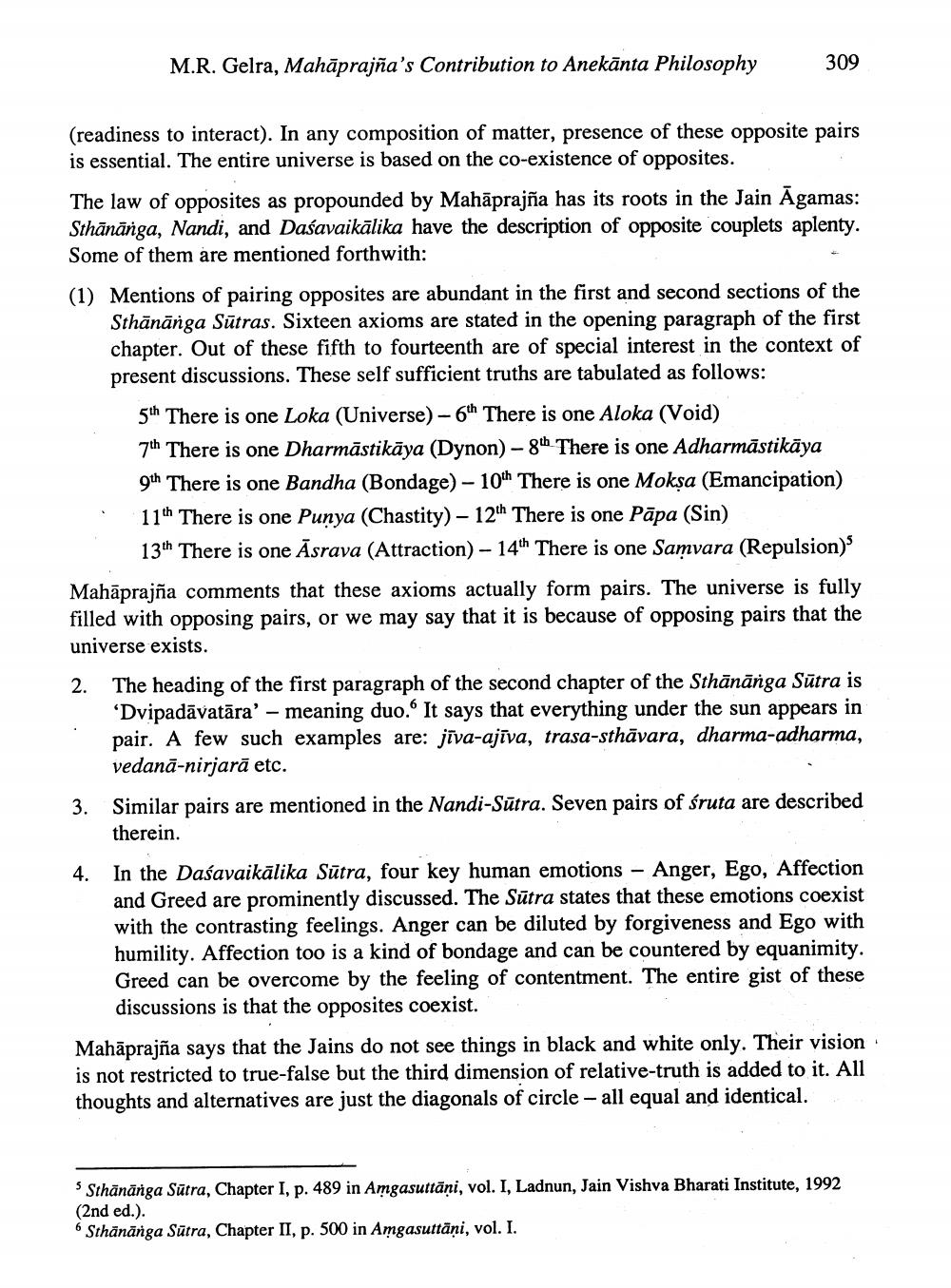________________
M.R. Gelra, Mahāprajña's Contribution to Anekānta Philosophy
309
(readiness to interact). In any composition of matter, presence of these opposite pairs is essential. The entire universe is based on the co-existence of opposites. The law of opposites as propounded by Mahāprajña has its roots in the Jain Agamas: Sthānānga, Nandi, and Daśavaikālika have the description of opposite couplets aplenty. Some of them are mentioned forthwith: (1) Mentions of pairing opposites are abundant in the first and second sections of the
Sthānānga Sūtras. Sixteen axioms are stated in the opening paragraph of the first chapter. Out of these fifth to fourteenth are of special interest in the context of present discussions. These self sufficient truths are tabulated as follows:
5th There is one Loka (Universe) - 6th There is one Aloka (Void) 7th There is one Dharmāstikāya (Dynon) - gth There is one Adharmāstikāya 9th There is one Bandha (Bondage) - 10th There is one Moksa (Emancipation) 11th There is one Punya (Chastity) - 12th There is one Pāpa (Sin)
13th There is one Āsrava (Attraction) - 14th There is one Samvara (Repulsion) Mahāprajña comments that these axioms actually form pairs. The universe is fully filled with opposing pairs, or we may say that it is because of opposing pairs that the universe exists.
2.
The heading of the first paragraph of the second chapter of the Sthānānga Sūtra is “Dvipadāvatāra' - meaning duo. It says that everything under the sun appears in pair. A few such examples are: jīva-ajīva, trasa-sthāvara, dharma-adharma, vedanā-nirjarā etc. Similar pairs are mentioned in the Nandi-Sūtra. Seven pairs of śruta are described therein.
3.
In the Daśavaikālika Sūtra, four key human emotions - Anger, Ego, Affection and Greed are prominently discussed. The Sūtra states that these emotions coexist with the contrasting feelings. Anger can be diluted by forgiveness and Ego with humility. Affection too is a kind of bondage and can be countered by equanimity. Greed can be overcome by the feeling of contentment. The entire gist of these
discussions is that the opposites coexist. Mahāprajña says that the Jains do not see things in black and white only. Their vision is not restricted to true-false but the third dimension of relative-truth is added to it. All thoughts and alternatives are just the diagonals of circle - all equal and identical.
Sthānānga Sūtra, Chapter I, p. 489 in Amgasuttāni, vol. I, Ladnun, Jain Vishva Bharati Institute, 1992 (2nd ed.). 6 Sthānānga Sūtra, Chapter II, p. 500 in Amgasuttāņi, vol. I.




